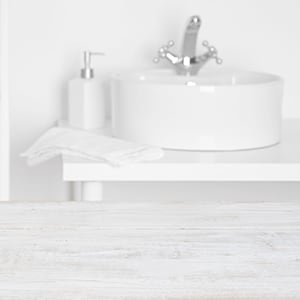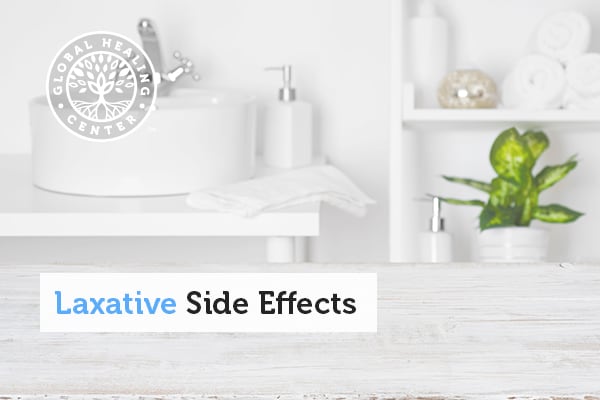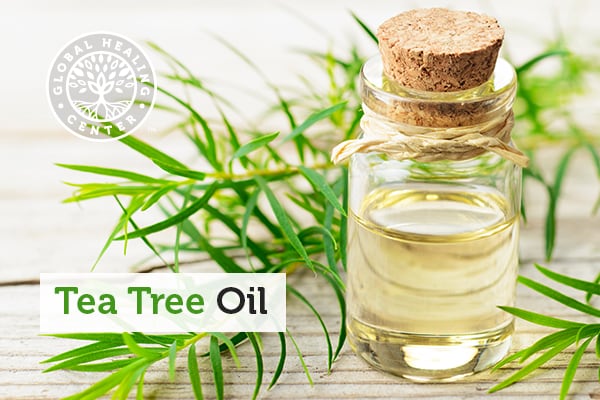

If your lungs are overworked or damaged by smoking, illness, allergies, or just being around air pollution in the environment, you can take specific steps to cleanse your lungs. Keeping your lungs clean, clear, and healthy will give you a greater connection to your vital life force.
What Is a Lung Cleanse?
A lung cleanse is a natural procedure designed to detoxify, cleanse, and refresh the delicate respiratory linings of the bronchial passages and lungs by purging them of accumulated environmental toxins, harmful organisms, and irritants. You can also help cleanse and strengthen the lungs with deep breathing exercises, massage, or certain herbs and oils with healing properties.
Who Needs a Lung Cleanse?
A lung cleanse can help anyone, since we all live in a world full of harmful chemicals, toxins, and irritants which can exert constant stress upon the lungs, but they are particularly effective for certain individuals. Whether you want to improve your lung function, or you want to kick-start a new smoke-free life, a lung cleanse is a great start on the path to a healthy lifestyle.
Smokers
I strongly recommend all smokers quit smoking before you end up with lung disease or serious lung damage. If you currently smoke, you should cleanse your lungs with one or more of these practices.
Recent Ex-Smokers
People who have recently quit smoking can benefit from cleansing their lungs, which helps clear out the gunk from the past. While you will still need time for your lungs to heal themselves, you can stimulate that process with a lung cleanse.
People With Lung Conditions
If you have specific health concerns, there is no substitute for the advice of a healthcare practitioner. When you’re having those conversations, ask them about the lung cleansing activities, herbs, and oils described here.
People With Pets & Allergies
Many people deal with allergies on a daily basis, whether from pets, pollen, or other common airborne allergens. Lung cleansing can help you clear out the allergens and may relieve some symptoms.
How to Detox Your Lungs
We’ve gathered together the best lung cleansing options with some additional information below.
Deep Breathing Exercises
You can increase the amount of oxygen that gets to your lung by regularly engaging in deep breathing exercises. Studies found that deep breathing after heart surgery helped aerate the lungs, bringing more oxygen and promoting healing.[1] Taking long, slow, deep breaths not only brings more oxygen into the lungs, but it also helps oxygenated blood to spread out through the body. This technique has the bonus of helping you relax.
Try taking ten slow, deep breaths three times daily to expand lung capacity and oxygenation to your bloodstream.
Essential Oils
Add several drops of these essential oils to a diffuser or humidifier in your home. Inhale deeply several times near where the cool steam emerges from the diffuser or humidifier. These oils smell great and have aromatherapeutic properties. You can couple this with a thought, such as “breathing in love and health, breathing out toxins.” Visualize eliminating accumulated toxins as you exhale, it can expedite the healing process.
- Oregano: Not just for cooking, oregano oil is well-known for its ability to deter harmful organisms like fungi and bacteria.[2]
- Tea Tree: This oil from the famous Australian Melaleuca tree can boost your immune system.[3]
- Eucalyptus: Another oil from an Australian tree, eucalyptus, has powerful antimicrobial properties against viruses, bacteria, and fungus.[4, 5] Not only that, there’s a long history of safely using it to promote lung health.
- Peppermint: The menthol in peppermint can boost exercise performance, likely by increasing lung activity.[6] Ironically, some studies indicate that too much may increase nasal congestion so keep this in mind.[7]
Exercise
When you exercise hard and breathe heavily, it helps increase your lung capacity and strengthens your entire cardiovascular system — the lungs, heart, and blood vessels. Conversely, scientists have irrefutable evidence that physical inactivity weakens your whole body and leads to illness. Likewise, we know that staying in good physical shape helps prevent many chronic conditions, like diabetes and cardiovascular disease.[8] If you go for even a light jog, you push breath to your lungs and get your blood flowing. For people who just quit smoking, this helps the lung healing process. If you live in an area with heavy pollen or suffer from allergies, you may want to jog indoors on a treadmill.
Castor Oil Packs
Castor oil packs have been used for centuries as a traditional remedy for respiratory ailments and improving lymphatic circulation. To help clear phlegm and toxins from your lungs with castor oil packs, soak 100 percent cotton flannel sheets or old shirts, cut up, with organic, cold-pressed castor oil that has been warmed up — but not too hot. Place these on your chest while lying down. Cover your mattress with a waterproof pad or garbage bags so you do not get oil on your bedding. Once you’ve placed the warm, oil-soaked strips on your chest, cover that with a plastic sheet (such as a cut-up garbage bag) and a heating pad. Keep this castor oil pack on for one to two hours, and then rise and clean up.
Chest Percussion
When mucus, fluid, or phlegm accumulates in your lungs, you can use chest physiotherapy or postural drainage and percussion. It’s an effective technique but requires the help of a healthcare provider, or sometimes at home with the help of a friend or family member. It involves getting into certain positions and gently thumping or drumming on the chest to help loosen the mucus so that it can be spit or coughed out. It can also bring more oxygen into the lungs.[9] Percussion is used to assist symptoms from certain medical conditions,[10] but can be used anytime you have congestion in your lungs you want to get rid of. Have someone tap gently on your back near one lung at a time as you cough. You can also lie on your side with your body at an angle to help loosen the phlegm and push it outward.[11]
Eat Lung-Cleansing Foods
Studies show that antioxidant-rich foods counter the production of mucus, fluid, and phlegm in the body, which tend to accumulate in the lungs and airways.[12] An antioxidant is a substance which counteracts oxidation in your cells. Raw fruits and vegetables are typically good sources of antioxidants.
An easy way to understand oxidation is with the example of fruit. When you cut an apple, the fruit pulp turns brown and spoils as oxygen in the air touches it — this is oxidation. The same process happens inside your body and is called oxidative stress.[13] Free radicals, such as “reactive oxygen species,” cause damage to your cells. Consuming antioxidants counters these effects, leading to healthier lungs and a healthier you.
The following are among the best lung-cleansing foods.
Cruciferous Vegetables
Broccoli, bok choy, cauliflower, cabbage, and other cruciferous vegetables are associated with a lower risk of lung cancer.[14] The effect was particularly strong in current and ex-smokers, and with raw vegetables, indicating that when you quit smoking and start eating more of these veggies, you can reverse the damage. That’s pretty incredible.
Honey
Honey is not only high in antioxidants, it also has antimicrobial, anti-inflammatory, and anticancer effects, according to a review of medical research.[15] It has been used since ancient times to treat and soothe many lung and respiratory conditions, including asthma, tuberculosis, and throat infections. Try a spoonful of raw honey by itself, or add it to an antioxidant tea, like green tea or matcha.
Berries & Berry Juice
Berries pack a powerful lung-cleansing punch. Try cherries, blueberries, cranberries, strawberries, goji berries, or acai berries to add lung-supporting antioxidants to your diet.[16, 17] Berry juice can replace an unhealthy snack or accompany a meal. You can also make detox water using berries.
Ginger
Several natural chemical compounds in ginger root (Zingiber officinale) — gingerols, paradols, and shogaol — have well-documented antioxidant, anti-inflammatory, and anti-cancer properties.[18] The anti-inflammatory nature of ginger means it helps break down mucus and improves blood circulation in the body.[18] You can use ginger in cooking, grate it raw on salads, or make ginger tea from mashed ginger root, lemon, and honey.
Aloe Vera
Exciting research has shown that aloe vera, which has antioxidant characteristics, helped reduce the damage caused by cigarette smoke on lung tissue in mice.[19] A second study with rats found similar results, with aloe vera increasing the body’s production of macrophages, a white blood cell involved in immune system response to irritants.[20] You can drink aloe vera juice, or take it as a supplement.
Herbs
Many herbs have properties that support lung health. Oregano, orange peel, elecampane, eucalyptus, peppermint, lungwort, osha root, chaparral, and lobelia can be used in tea, recipes, or taken as herbal supplements. Rather than growing or buying these herbs separately, you can enjoy them in a single lung cleanse supplement, Allertrex®. This all-natural lung cleansing spray is a blend of organic herbs and essential oils that promote smooth respiratory health, assist with normal lung function, and cleanse your lungs of harmful agents.
Avoid These Mucus-Producing Foods
Some foods may cause mucus production in your body, so if you tend to experience chest congestion, or have asthma or COPD (chronic pulmonary disease), I recommend avoiding these foods:
- Dairy products (milk, cheese, yogurt, ice cream)[21]
- Processed meat
- Fast food
- Chocolate [22]
Other Ways to Keep Your Lungs Clean
For people with lung ailments or allergies, smokers, or ex-smokers who want to improve their lung health, there are other activities you can engage in that will help ensure the air you breathe is as healthy as it can be.
Keep Your House Clean
Regularly wipe down your shelves, ceiling fans, and all around your house as allergens and lung irritants lurk in seemingly benign dust. After you dust, vacuum. Vacuum at least three times a week if you have carpet, especially if you have indoor pets. Make sure to use a vacuum with high-rated HEPA filtration.
Use Natural Cleaning Products
Instead of using cleaners with harsh chemicals known to irritate your lungs,[23, 24] use homemade do-it-yourself cleaning products, or buy environmentally-friendly, non-toxic formulations. Common items like baking soda, lemon juice, and vinegar are all you need to get started.
Use an Air Purifier
A good quality air purifier can remove allergens, dust, and pollutants from the air in your home, helping your lungs to rest easy. People can even end up with “sick building syndrome” from spending too much time in poorly ventilated buildings. Standalone air purifier units can provide focused filtration on a room-by-room basis. Depending on your goals, you may also want to weigh the benefits of a whole-home filtration system.
Buy Plants for Your Home
House plants produce oxygen, which we humans need for survival. They also filter out toxic chemicals from the air. A lot of people do not realize that if plants do not get enough sunlight, they will consume oxygen rather than producing it, so make sure to open your windows to let in the sunshine! One study in India found a building with many plants reduced eye irritation by 52 percent, respiratory conditions by 34 percent, and headaches by 24 percent in workers! [25]
Benefits of a Natural Lung Cleanse
We use our lungs every moment of every day, and they get exposed to the pollutants and allergens that we inhale. Your body has an amazing, built-in ability to heal itself, and of course, that includes the lungs and the airways leading to them. Cleansing your respiratory tract can catalyze and improve your body’s self-healing properties. Lung cleansing can help you breathe easier in the short-term and boost your immune system in the longer-term.
Points to Remember
The number one way to improve lung health is to reduce the number of toxins you’re inhaling. For smokers, this means it’s time to quit smoking. People who recently quit smoking, current smokers, people regularly exposed to smoke, individuals with lung ailments, or people exposed to air pollutants can all benefit from a lung cleanse. You can cleanse your lungs by engaging in deep breathing exercises, cardiovascular exercise, using tea tree, eucalyptus, peppermint, or oregano essential oils alone, in a diffuser, or together in an herbal supplement like Allertrex. You can also eat lung-cleansing foods such as cruciferous vegetable and high-antioxidant berries. Clean your home often. Vacuum regularly and use non-toxic cleaning products. Invest in an air purifier, and get some house plants to help naturally cleanse the air in your home.

How to Cleanse Your Lungs Naturally
Length: 2 minutes
The post Lung Cleanse: 10 Ways to Detox Your Lungs appeared first on Dr. Group's Healthy Living Articles.
source https://www.globalhealingcenter.com/natural-health/lung-cleanse-detox-your-lungs/



